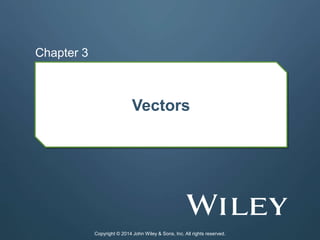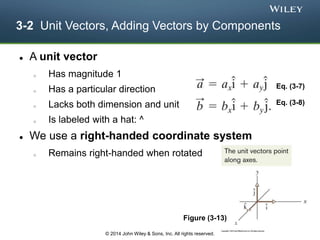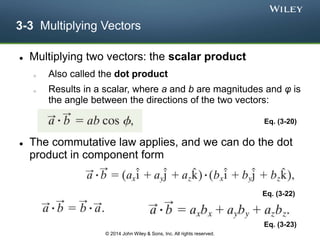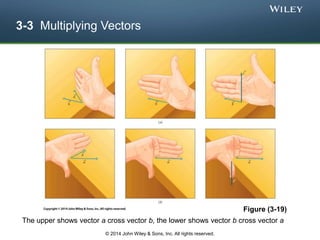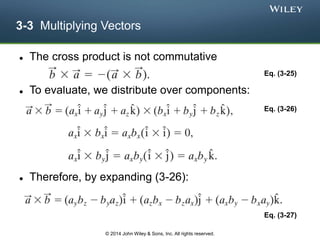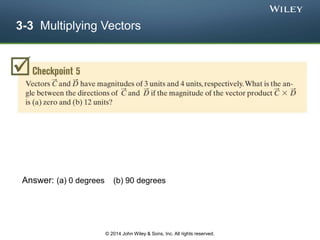This document discusses vectors and their properties. Some key points covered include:
1) Vectors have both magnitude and direction, while scalars only have magnitude. Vectors can be added geometrically by drawing them head-to-tail or by adding their components.
2) Vectors can be expressed using unit vector notation or in terms of their magnitude and angle. Components allow vectors to be fully defined and added using algebra.
3) Multiplying a vector by a scalar scales its magnitude but keeps its direction. The dot product of two vectors yields a scalar, while the cross product yields a perpendicular vector determined by the right-hand rule.
